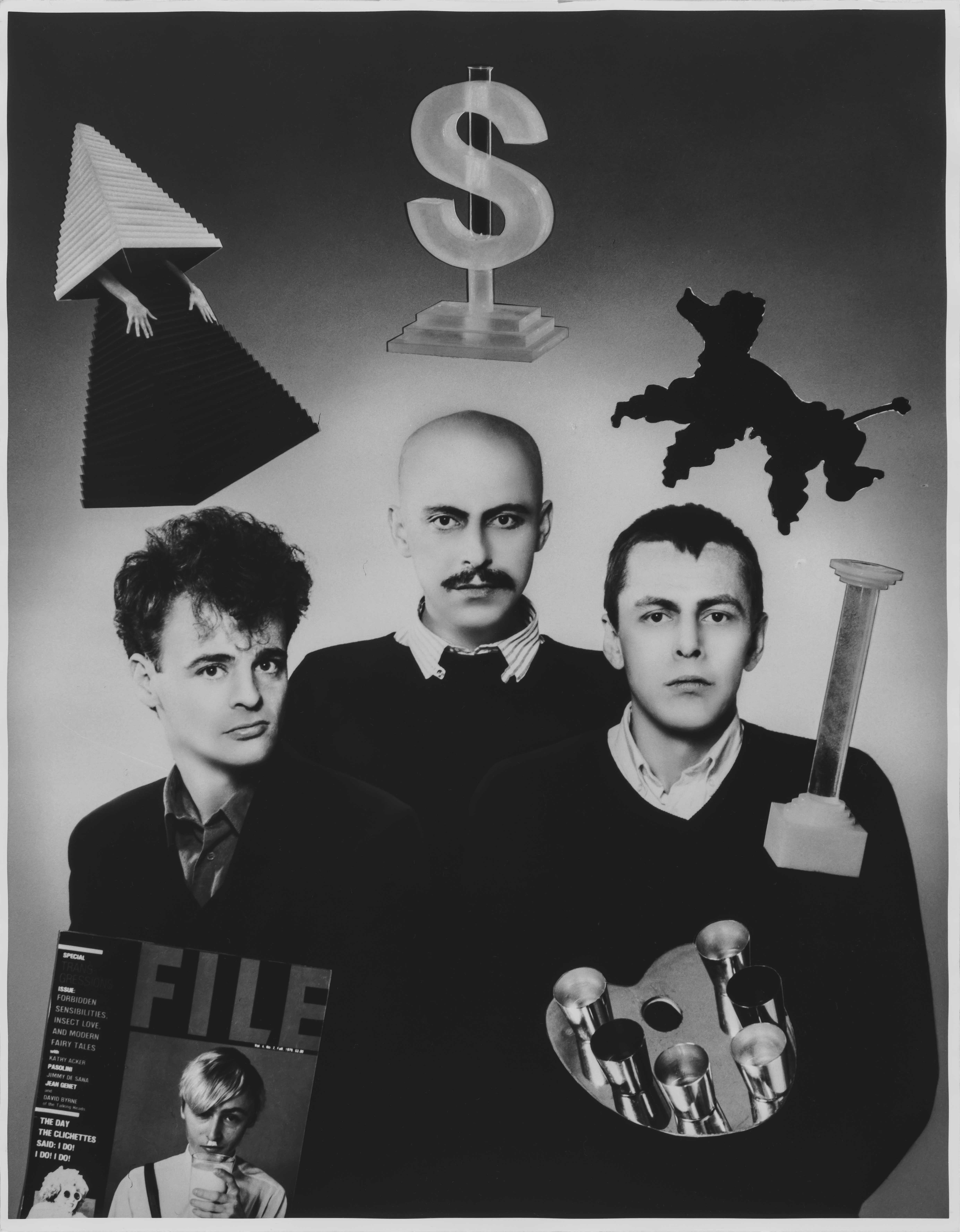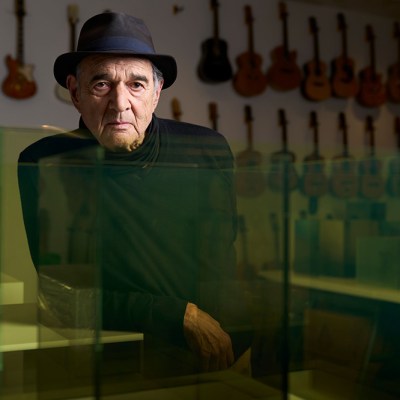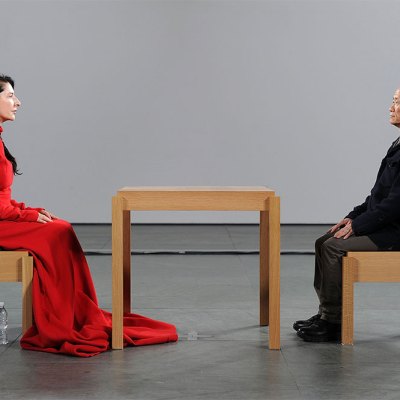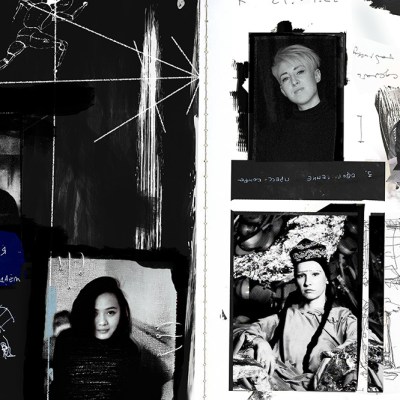The Canadian artist AA Bronson was one of founding members of the art collective General Idea along with Felix Partz and Jorge Zontal. The artists lived and worked together for twenty-five years, exploring themes ranging from mass media and popular culture to queer identity and the AIDS epidemic. Since the death of Partz and Zontal in 1994 from AIDS, Bronson has become increasingly interested in the practice of healing and often incorporates healing processes into his artworks, focusing on specific historical and contemporary traumas. The work of General Idea is the subject of a retrospective at the National Gallery of Canada, Ottawa, from 3 June to 20 November.
Where is your studio?
My studio is wherever I am. I have a very large, rambling apartment in Berlin, which is about 3,000 square feet and I tend to do most of my work at the dining room table.
Is it necessary for you to follow some kind of routine to get into the headspace to create?
I’m working 24 hours a day [laughs]. I’m surrounded by everything to do with the work at all times. The apartment is full of all of my ongoing projects and so on. My work is my life.
What’s the strangest object you currently have in the apartment?
I have a stuffed fox, but that’s not so strange these days, I suppose. I got it from a little auction house in Sweden. I also have a performance costume on a mannequin. The costume includes a collar made of moose antlers with enormous crystals lashed to the antlers with leather. It’s from a performance I did in 2013 in South Korea. That’s probably the oddest object in the room.
AA Bronson at the Gwangju Biennale, 2014. Photo: Mark Krayenhoff van de Leur

Do you pin up images of other artists’ work?
I have the tendency to collect small artworks by younger artists and those are propped up all over the place, but I’m not one of those people who cuts out pictures and pins them to the wall.
What’s the most recent artwork that you acquired?
A self-portrait by a Canadian painter called Sholem Krishtalka. It’s a naked self-portrait in which he looks like he’s about to implode. It’s a wonderful painting.
Do you look at books while you’re working?
I’m surrounded by books. I recently gave 3,500 books to the National Gallery of Canada’s library because it just was becoming too much, but every bookshelf is still full. There are books on all of the tables, heaped on the floor – there are books everywhere.
I have a fetish for artist’s books. I don’t mean books about their art, but books as works of art. I have a lot of these and I’m always looking at them. Then I have books related to subjects, especially early 20th-century movements, and I’m surrounded by an ongoing surge of catalogues that I pick away at, but I don’t tend to look at in as much detail.
What are you reading at the moment?
The book I’m immersed in at the moment is a biography of Agnes Martin, which is quite unusual for me as I don’t usually read biographies. It’s a wonderful book, exploring the relationship between her life and her work, which art critics don’t usually give much space. I think of her as kind of the Gertrude Stein of the art world. She’s an interesting example of a woman, a lesbian, in the art world at a time when men were everything. The book looks at how she coped with that.
AIDS (1987), General Idea. © General Idea. Photo: Blondeau & Cie

How messy is the space?
I had a friend over a few days ago that I hadn’t seen for a long time and he was a bit overwhelmed by the quantity of stuff in here. I think it’s become a bit Victorian in a way – just crammed full of things.
I go on binges. I was on a bit of a carpet binge for a while so there are a lot of carpets and I also collect ceramics, which are everywhere. Then of course, there are my own paintings. For example, there’s a gigantic General Idea AIDS painting in the living room.
What do you like most about the space to live and work in?
I like to have a lot of space and I like to be able to ramble around as I’m thinking. I also like a very high ceiling. I’ve lived in many different places in my life and not all of them were like that, but wherever possible. I suppose that’s just a normal artist space, right? Something big and roomy.
This particular space is on Fasanenstraße in Berlin, which was the original centre of the art world before the wall came down. The art world has since moved on to the east of Berlin, but I love being in the centre of what once was, the memory of it having been a power centre at one time. There are three auction houses on the block and that kind of thing – I quite enjoy all of that.
How long have you been in this particular apartment?
Eight years. I found this place about a year after arriving in Berlin. Now, the landlord is trying to get me out – I think because he wants the place for himself. I was invited to the city by the DAAD for their Berliner Künstlerprogramm, which invites artists to come and spend a year in Berlin. I think they were originally inviting 12 artists to come every year, with their families or whoever they considered to be family, and they would give them an apartment, a studio and a stipend. Apparently of the artists invited, about 50% of them ended up staying in Berlin as we did. It’s a very generous program, and it’s changed the face of Berlin. Many of the artists that you associate with Berlin were brought here by that program, like Nan Goldin or Douglas Gordon.
Self-portrait with Objects (1981–82), General Idea. © General Idea. Photo: NGC

Do you listen to anything while you’re working?
I’ve subscribed to the Berlin Philharmonics digital library which includes thousands of concerts. It’s an amazing resource of mostly classical music. Generally though, I prefer silence while I’m working. It’s one of the things I love about Germany: there’s a lot of value placed on silence. When I’ve told people that I live on Fasanenstraße, which is just a little street, they say, ‘How could you possibly live there? It’s far too noisy.’ My last apartment was on 23rd Street, 9th Avenue in New York City so this is like absolute silence in comparison.
Who has been your most interesting visitor over the years?
Oh god – that’s a big question. I’m 76 so that’s a lot of visitors, but the one I’ve been thinking about about recently is a visit we had from Ray Johnson. He was a very radical performance artist who is known for creating mail art. Anyway, he came to visit us, General Idea, in Toronto for a long weekend and he arrived with a big piece of silver tape over his mouth. He didn’t remove it once during the entire weekend. I have no idea how he ate or drank. He never spoke a single word, but he hung out with us for three days. I would have been about 28 or 29 years old at the time. To me, it felt like an example of how one can live one’s life radically as a work of art, how art can impregnate every aspect of your being and doesn’t have to be something you show in a gallery and sell.
Is anyone banned from visiting?
I don’t think so. We pretty much have an open door policy.
‘General Idea’ is at the National Gallery of Canada, Ottawa from 3 June–20 November 2022.



